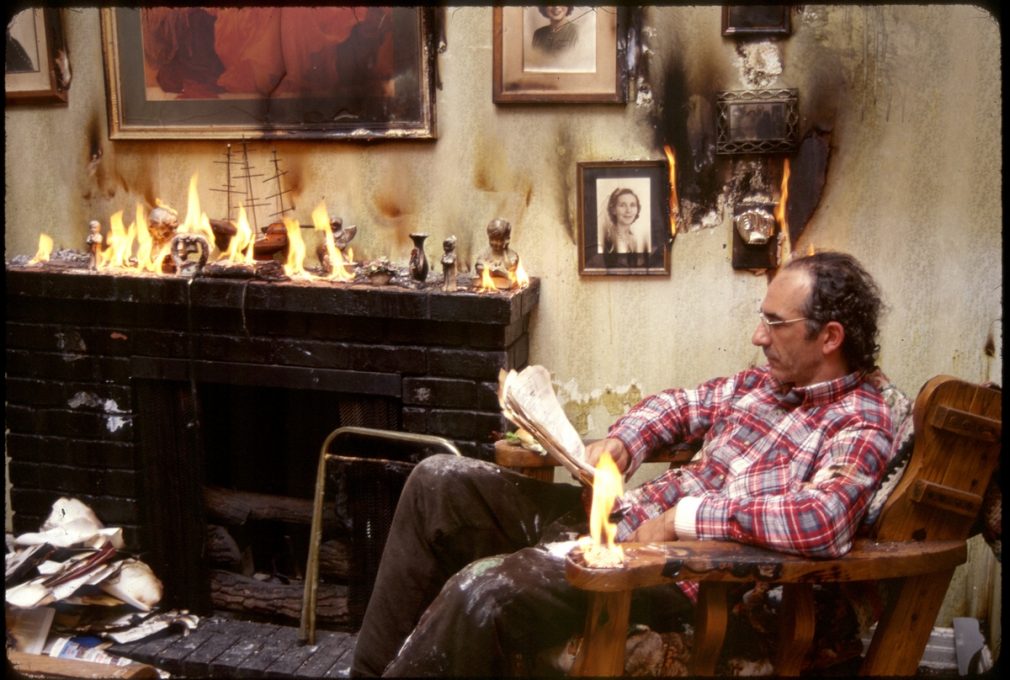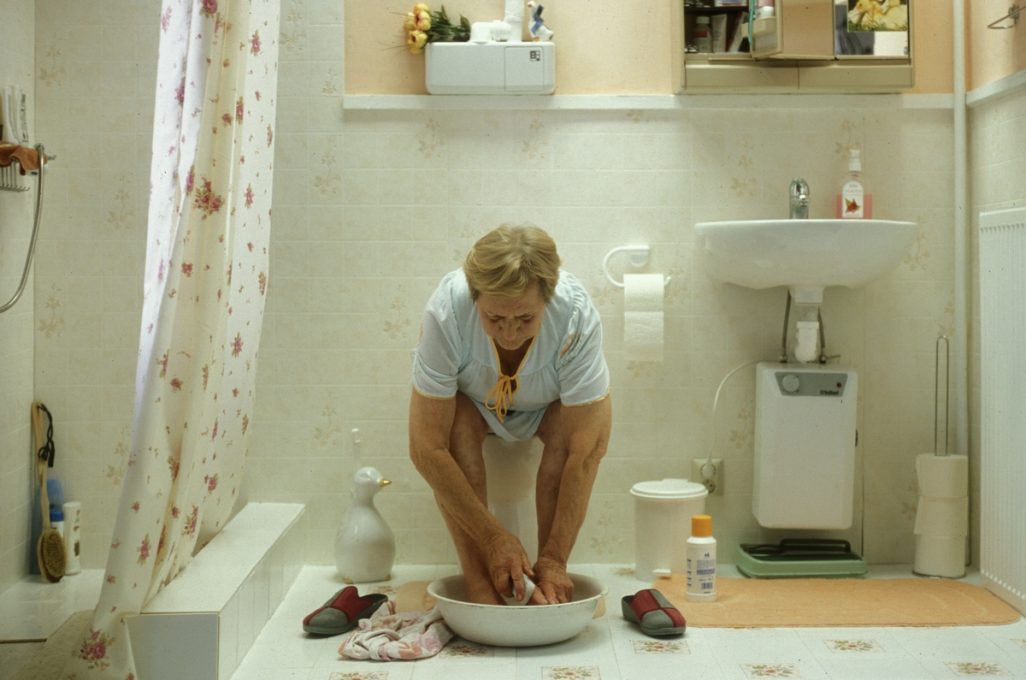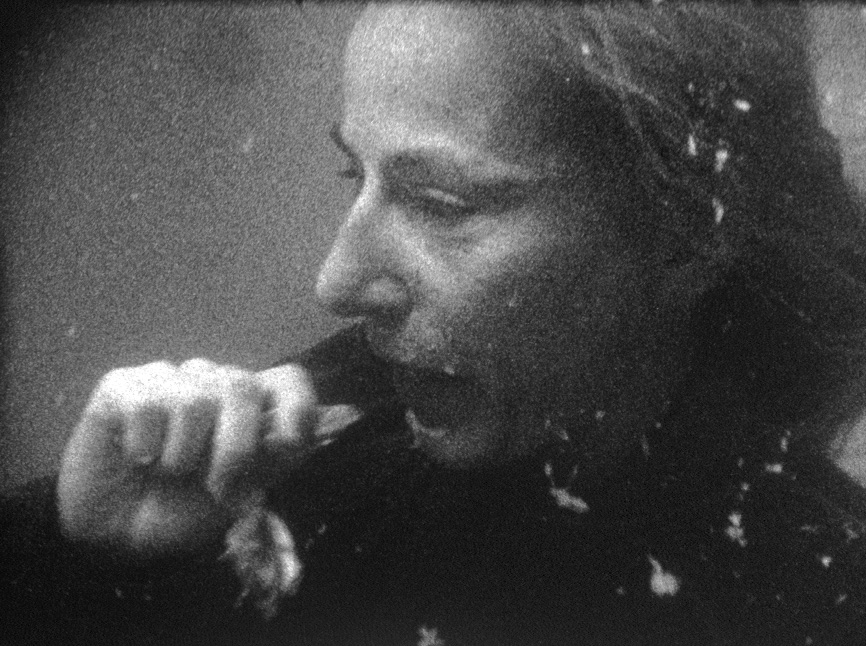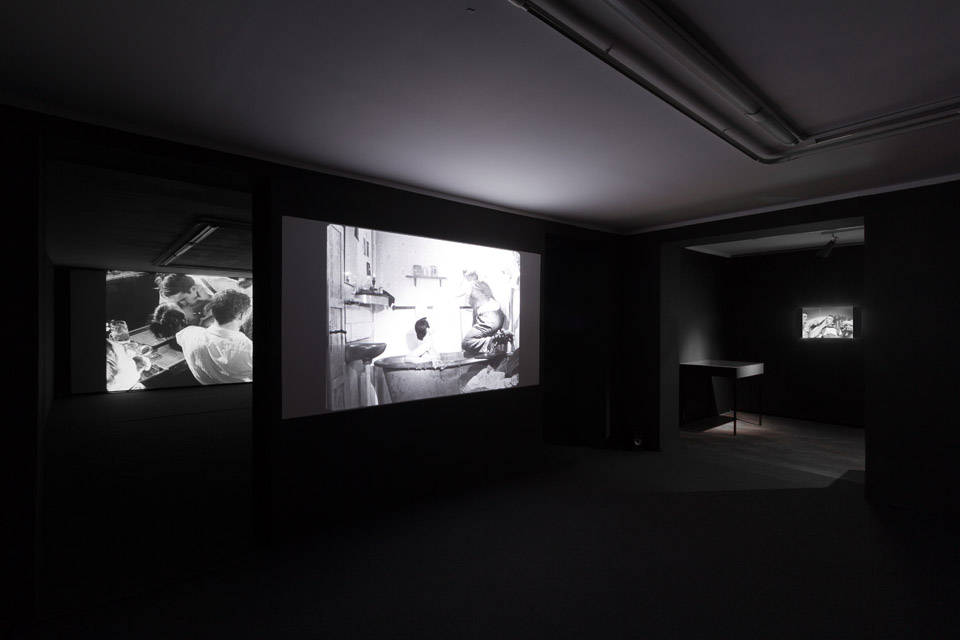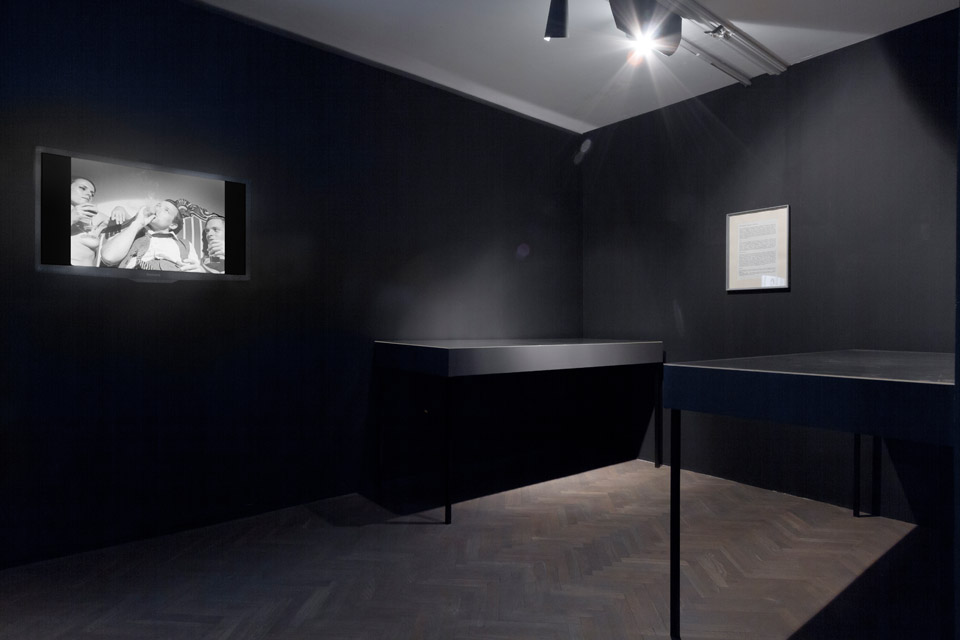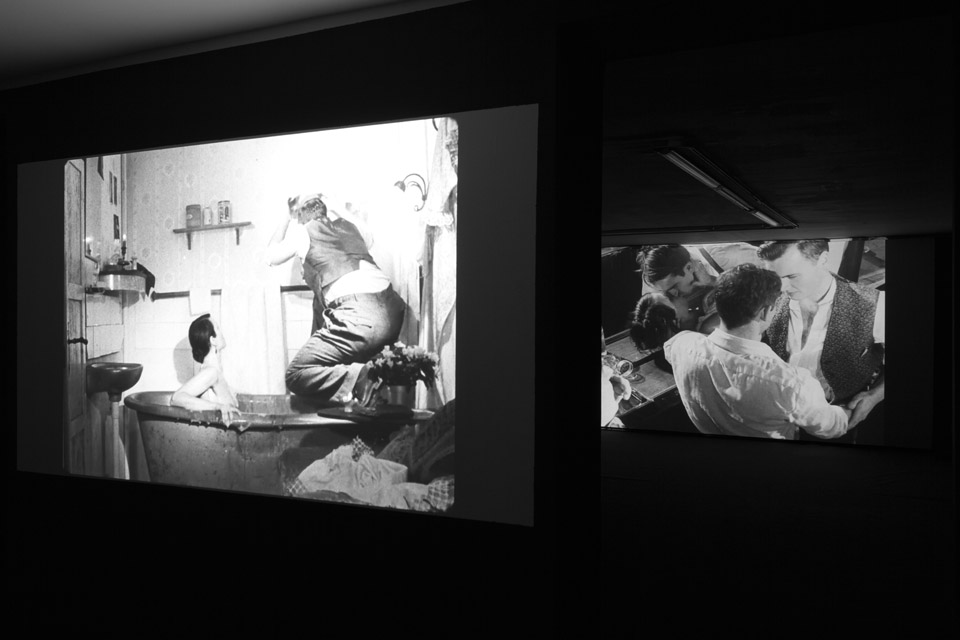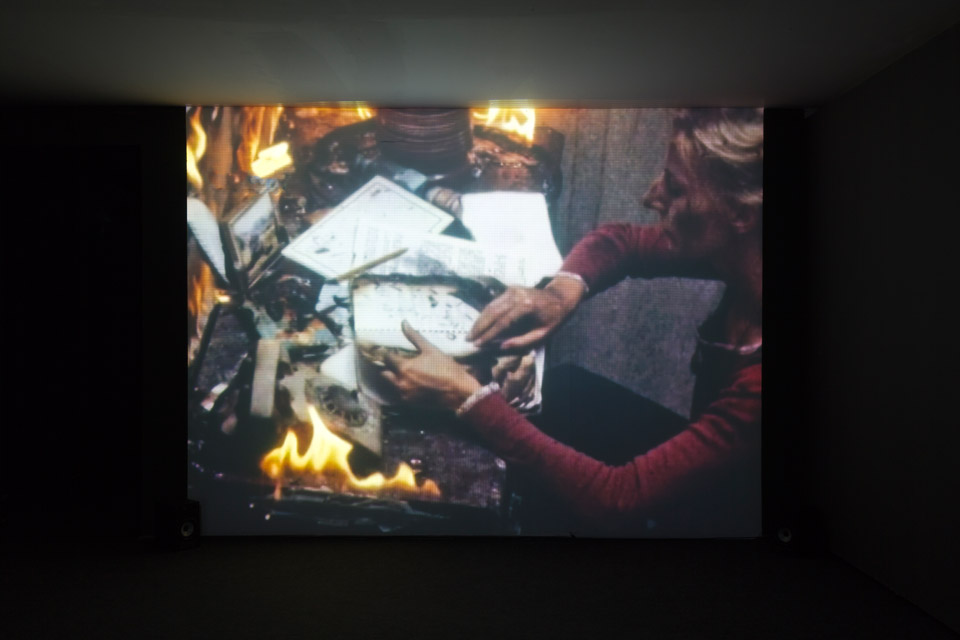REYNOLD REYNOLDS – The Lost
Reynold Reynoldswas born in 1966 in Alaska. He began his artistic work in New York and he currently lives and works in Berlin. He studied physics under the professorship of Noble Prize winner, Carl Wieman, then continued his education in the fields of experimental filmmaking and visual arts. Reynold Reynolds’ thorough education is reflected in his artistic work, which constantly crosses the borders between cinema, art, scientific experiment and philosophy explored using visual means.
Reynolds is an author of short films and intricate cinematographic installations. He is a visionary, whose extraordinary images rivet the viewers’ attention, but at the same time he is an expert craftsman. His films are carefully designed machines for constructing reality. Their matter is almost tangible; in spite of the era of digital image, where the video is only a collection of data, Reynolds creates his works on 8 mm and 16 mm films and shoots them in ingeniously constructed sets using physical props. His is a master of methodical studio work and analogue special effects. The “magic” of his films comes from the tradition dating back to Georges Méliès – a tradition where cinema was a field of invention for technical ingenuity mixed with illusionist tricks.
The skills of a film “magician” allow Reynolds to manipulate space, time and physical properties of the world he depicts in his works. Time can become condensed, stretched or divided into a number of parallel paths of events. The space becomes distorted and the laws of physics change. The lines dividing the conscious subject and the inanimate matter surrounding it are questioned; thoughts can take physical form and objects can become alive. His every film can be seen as a bizarre scientific experiment. Using cinematographic methods, Reynolds creates conditions which are impossible to achieve in reality in order to conduct his experiments. In the laboratory of his art Reynolds studies the relations of human being to time, space and matter, he analyses the fascinating processes of metamorphosis, decay and destruction. On the other hand he shows how human thoughts, psychological states and emotions can transform the reality surrounding us.
More about the artist:www.reynold-reynolds.com/index.htm, www.facebook.com/Artstudio.Reynolds
Reynold Reynolds,Five Pieces
Five Pieces is a selection of five works from the artist’s oeuvre. The exhibition opens with two films, Drowning Room and Burn, which were created at the beginning of the 21st century by Reynold Reynolds and a recently deceased artist Patrick Jolley. Both works together create an informal diptych. They present two catastrophic visions, which are unique, because the disasters presented in them are not seen as extraordinary. On the contrary, the catastrophe is constant, it is part of everyday life. The world is consumed by flood, it bursts into flames, but the life goes on – surrounded by permanent, everyday apocalypse.
The spectre of catastrophe also haunts the daily life in the film Six Apartments; it is a study of chaos triumphant, which seems to gain the upper hand both in physical world and the sphere of ideas. Radio and television bombard the residents of six apartments with woeful tidings and ominous prophecies, while they themselves, with every passing moment, move closer to their private apocalypse.
Secret Life and Secret Machine are the first two parts of the Secret Trilogy. In both films Reynolds presents a study of characters, using this classical theme as a tool for studying our own ideas about space-time continuum.
Reynold Reynolds & Patrick Jolley
Drowning Room, 2000
transfer from 8 mm film, 10 min
The film, shoot in a house filled with water, depicts a story of a flooded suburb. Tension, repression, depression and home atmosphere have become so dense they took liquid form.
Reynold Reynolds & Patrick Jolley
Burn, 2002
transfer from 16 mm film, 10 min
The inside of the house is burning, but its residents remain focused on themselves, their everyday life and emotional problems.
Six Apartaments, 2007
two channel video projection, transfer from 16 mm film, 12 min
Six people live next to each other in six separate apartments. They remain isolated, celebrate daily rituals, indifferent to each other and to the violent processes of erosion and decay which consume the world, their apartments and them.
Secret Life, 2008
two channel video installation, transfer from 16 mm film,2 x 5 min
The film’s protagonist is a woman living in an apartment that comes alive. Her own thoughts break free and run wild, overgrowing the space and spreading like plants.
Secret Machine, 2009
two channel video installation, transfer from 16 mm film, 2 x 7 min
The film’s protagonist becomes an object for her antagonist’s experiments. The scientist, unemotional like a machine, studies and measures the model’s body and describes it using various units of time and space.
Reynold Reynolds, The Lost
The Lostis an art work that the artist began in 2011, but it is a project that has its roots in the 1930s. The Lost is the title of Artstudio Reynolds’ restoration of and research into Die Verlorenen – a film which was uncovered in Siberia in 1987. The film which dates from the early 1930s was found in a large crate alongside an intriguing assortment of objects: medical instruments, sketchbooks, reams of notes and a selection of photographs which depict what seemed to be a cabaret. The found film material was, in many places, highly damaged and since 2011 Reynolds and his team have been painstakingly restoring the film footage. This process of restoration has revealed remarkable footage of what was intended to be a commercial vampire film. From what limited archival information survives, research reveals that the director, already an accomplished cinematographer, was venturing into directing for the first time with Die Verlorenen. Yet, making a film which was set in a cabaret and that depicted Berlin’s Bohemian milieu in early 1930s Germany, was certainly not the type of material that would have been left uncut by state censors. State controlled censorship of the film industry had existed in the Weimar Republic since 1920, where the emphasis on censoring films was firmly due to ‘moral’ concerns, particularly in order to regulate the sexual content. However, in the early 1930s with the rise of National Socialism film censorship took on both a social and political agenda. With the establishment compulsory of membership of the Reichsfilmkammer (RFK; English: Film Chamber of the Reich)in 1933, the film industry became utterly regulated. Not solely in terms of the censorship of cinematic material, but in a film industry that prohibited Jews or foreigners to work, the making of a film like Die Verlorenen suddenly became impossible.
The Lostis an art work which is engaged in an examination of cultural history through the restoration of a historical artifact. As the film was never completed, Reynolds and his team are faced with the sensitive and complex task of editing the footage, a task of material and technical complexity as well as of social and historical sensitivity. Reynolds is not just uncovering a remarkable insight into the fringe of the commercial film industry but also facilitating further research into the history of film production and film censorship in the early 1930s. The title The Lost is the direct English translation of Die Verlorenen but on a wider level this restoration project restores the narrative of those film makers, film and fringe groups which have been edited out of film through brutal censorship or lost through the material decay of footage.
The Lostexhibits sections of Die Verlorenen which have been successfully restored, a selection of objects pertaining to the film and archival research into both film censorship during the National Socialist period and the creation of this fascinating artifact, a remarkable 1930s film which was until now never allowed to enter into cinematic history.
Co-financing:

Media patron:
Curator: Stach SzablowskiReynold Reynolds

PLAN YOUR VISIT
Opening times:
Thuesday – Sunday
10:00-18:00
Last admission
to exhibition is at:
17.30
